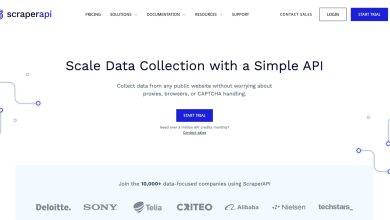
This sponsored article was created by our content partners, LambdaTest. Thank you for supporting the partners who make SitePoint possible.
Do you often find yourself stuck at a point in automation testing and need to re-evaluate your approach by backtracking a few steps? It might be the case that you’re running the show without emphasizing enough the practices churned out from the experience of millions of testers.
If that’s the case, this post is just for you. We’ll hop on the best practices used in automation testing in large enterprises by focusing on their relevance, approach, and the best way to utilize them while working on an application.
Testing an application in large enterprises is a challenging task. The application is highly complex, with tons of modules, and testing takes considerable time. In such a high-risk and high-pressure area, we can’t let a mistake ruin the effort of multiple days, which can cost the organization a lot of money and time.
This is the reason we always start testing by planning our future steps. This phase includes strategies to take, documenting the responsibilities of team members, tools to choose from, and much more. However, what we often forget to analyze in this step is to document the practices we should follow.
The major benefits of accounting for this additional step are manifold. They include:
- Team members’ actions and work will be in sync, as they all refer to the same practices.
- No reiteration means saving a lot of time and costs.
- A centralized practice system means every new member will have access to that document. Therefore, they can understand the code written by other people easily.
- Best practices are “best” because they’re proven with the time and experience of many testers. So, when you follow them, you follow the footsteps of millions of testers who’ve described it as the most optimum path. This means your testing will ultimately be most efficient without additional work.
These benefits are hard to ignore when testers have so much responsibility, and when the application has thousands or millions of customers. The best practices described below will help you design the best way possible with minimum effort on the way.
Don’t Try to Automate Everything
Automation saves time and money for the enterprise. This lures us towards a system where every task is automated. This is a mistake. In any scenario (or application), we may encounter either or both of the following situations:
- a task that has an unpredictable result
- a task whose complexity increases consistently when automation is applied
The first scenario is simple to locate. When a task has an unpredictable result, automation shouldn’t be applied, as it may produce different values than expected in the future.
Secondly, a task shouldn’t be automated just because we need to increase automation. The complexity of such tasks increases, increasing the time it takes to maintain the scripts. For instance, usability is best done by manual methods, as there are too many pathways a user can take from start to end. Documenting all of those paths just for automation is simply a waste of time.
Only automate tasks that really need to be automated. The only eligible tasks are those that will consume more time in repeated actions, or that provide better efficiency in test execution through automation. In the end, the ulterior motive of implementing automation is to decrease the time, not increase it.
Focus on Quality Data
Data is the most important thing for an organization. When we get data directly from the source, it’s considered raw data. This data is useless, because meaningful patterns can’t be drawn from it. In simpler words, this data can’t be mined. For mining, we need data in a pre-defined form with all the filled values. In the technical world, that is called “clean data”.
The journey from raw data to clean data is a multi-step process that’s extremely important follow, as advised in the documentation. That doesn’t mean raw data can’t produce patterns, but the choice is clear when you see the difference between the results achieved through raw data and clean data.
Quality data is important in a lot of ways, a few of which are listed below:
- It helps in making important business decisions for the future (decisions that help a business to grow).
- It helps in tailoring specific needs for specific customers.
- It helps in understanding which areas can improve customer satisfaction.
- All the points mentioned collectively contribute to the scalability of the business.
- It saves time in inferring patterns from other means.
When we deal with applications from large enterprises, all this becomes even more important, as the collected data is huge. When performing automation testing in such scenarios, we need to ensure that the data we’re using for testing is “quality data” and not the “raw data”. With quality data, we get the results that we expect from the end user, and it also helps in understanding practical bugs when the same data is fed into data-driven pipelines.
Dеtеrmining what makеs a tool “good” is oftеn tricky, as its value isn’t solеly basеd on its fеaturеs. Instеad, a tool’s effectiveness liеs in its ability to synchronizе with thе project, tеam, and skills involvеd.
If you wish to learn how to write test scripts in Python, a tool with Python and Selenium support is enough, even if it doesn’t have any powerful features. But in large enterprises, we always look for tools that help us stay in a single place rather than jumping from tool to tool for various tasks. A complete tool would probably be the first choice when dealing with scaled-up applications. So, what do we mean when we say we need a “complete tool”?
In largе еntеrprisеs, numеrous tеams arе rеsponsiblе for working on various applications or diffеrеnt componеnts of a singlе application. Thеsе tеams oftеn utilizе diffеrеnt tеchnologiеs basеd on thеir spеcific rеquirеmеnts. For instance, somе tеams may focus on tеsting visual bugs, whilе othеrs may work with Sеlеnium Grid or еngagе in cross-browsеr tеsting. Howеvеr, whеn еach tеam usеs diffеrеnt tools, it results in thе gеnеration of sеparatе rеports. Combining thеsе rеports bеcomеs a time-consuming process. Morеovеr, tеam mеmbеrs find it challenging to assist thеir collеaguеs who might be facing issues with unfamiliar tools.
To address thеsе challеngеs, an idеal solution is to have a comprеhеnsivе tool that intеgratеs and supports multiple features within a singlе platform. This approach allows for strеamlinеd management of tеsting data and rеport gеnеration through a unifiеd organization account. As a rеsult, rеports bеcomе еasiеr to rеad and accеss, saving valuablе timе for all tеam mеmbеrs involvеd.
Cloud-based digital experience testing platforms such as LambdaTest are equipped with these functionalities and move everything to cloud-based infrastructure. This has two major benefits. First, anyone and everyone can access their account from anywhere in the world through any system. All they need are their credentials. Second, these tools ensure that the testers get a robust infrastructure for testing. This way, you don’t need to halt your executions just because there’s a fault in the system. In addition, they are economical, and there are no maintenance overheads as in on-premise solutions.
Use Real Devices
An application that belongs to a large enterprise is used by a vast audience spanning multiple continents. All these people us different types of devices to open the application. While it would be extremely tempting and easy for testers to download and install an emulator, it wouldn’t lead to accurate results.
Emulators are best to use when the area we’re testing doesn’t involve hardware or parameter evaluation — for instance, when we’re testing whether or not a normal submit button is working, or testing a navigation bar’s options. However, when we need to test things like network latency, page-loading time, actual color representations, and so on, we can’t rely on emulators — even though emulators do come with these options.
What we need here are real devices. Using real devices when necessary is a best practice for implementing automation testing in large enterprises. A real device will give metrics the same as an end-user device would. While you can also use real devices for areas we mentioned as compatible with emulators, it will increase the testing time and cost overload. To manage a balance between cost and time, testers generally opt for a platform that provides a real device cloud. These devices can be connected and used similarly to emulators without any of them having to be purchased.
Document Everything
Documentation is an integral part of the process — not only when testing, but when you’re doing anything in SDLC. It creates a document that will contain all the knowledge base over time, which we can use as a reference and refer back to while working on certain tasks. But apart from this, the most important aspect of documentation is that a new team member need not bother other team members to gather knowledge about the product. The documentation will also provide guiding principles for maintaining a consistent standard across teams.
Don’t Underestimate Reporting
Reporting is a practice that will help you at every point in your career as a tester. It’s common to consider reporting as a formality for wrapping up the testing phase, but by acting as a bridge between every person in the organization and the testing team, reporting is much more than it seems.
When anyone from a non-technical team wants to know how the testing went, verbal communication is one of the mistakes testers commit in their early careers. In reality, we can send the report and just be done with it. However, if we don’t want any further queries, our report should be designed in such a way that every piece of information is available and readable, no matter who the reader is.
A good report consists of graphs, pictorial diagrams, analysis, and judgment provided by the testing teams that act as concluding statements. For instance, if the testing team doesn’t feel the application is ready to be released, they should document this in the report explicitly. The report should also contain the process that was followed and the results achieved in each of those processes.
For instance, one process will be dedicated to automation testing. The report should present how many test cases passed and how many failed, preferably with pie charts. A good report is one where all the necessary information is available for everyone (including the testing team), and where it’s also understandable. An easy-to-read report saves a lot of time in the future when we’re stuck and wondering what we did that time when everything went smoothly.
Conclusion
Large enterprises thrive on their applications. A lot of reputation and brand value rides on an application, and no enterprise wants to risk this. To keep things in check, large enterprises invest a lot of time in testing and exploring different angles so that the maximum number of bugs can be caught pre-release and not trouble the end user. But testing efficiency depends a lot on how we’re executing the testing process, rather than on what we’re doing. This is where best practices become so important.
Best practices are the steps to follow while performing testing to improve overall efficiency and leave less need for future maintenance work. In this post, we’ve focussed on practices from actual testing to documentation and reporting, which sometimes are ignored, as they don’t include actual test runs.
Before you jump in to your testing process, we recommend you take a step back and carefully plan all the steps first, following the best practices we’ve outlined here. This will ensure best results and optimum output.





